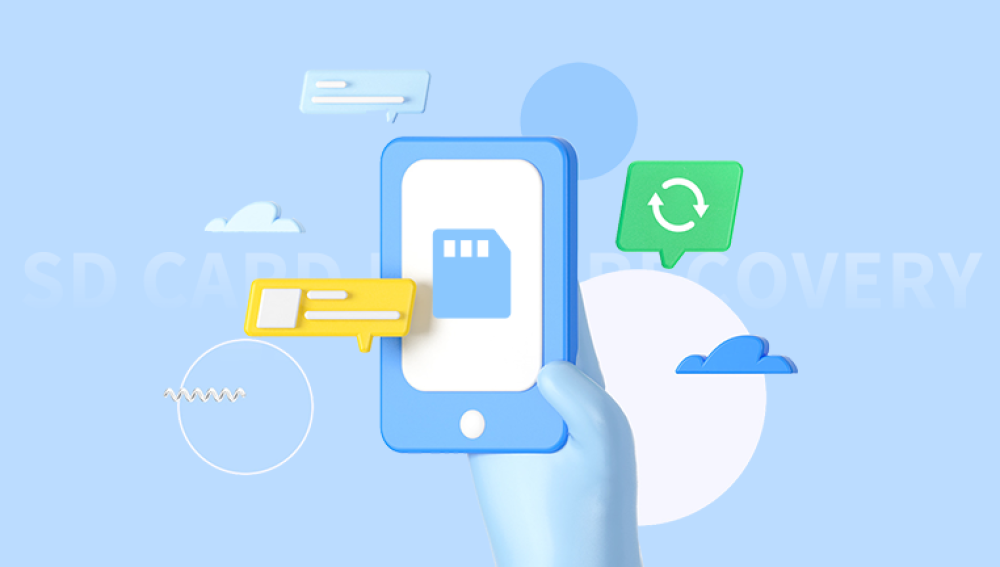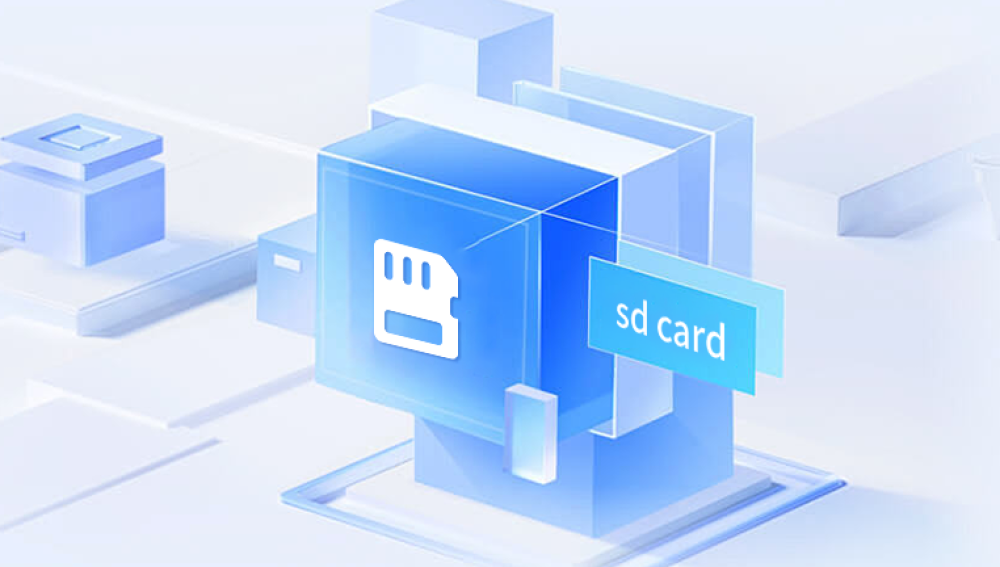With memory cards being a primary storage medium for digital cameras, smartphones, drones, and even security systems, photo loss from these small yet mighty devices is increasingly common. Thankfully, memory card photo recovery offers hope.
Common Reasons for Photo Loss from Memory Cards
Understanding how and why data disappears from memory cards is crucial before jumping into the recovery process. Here are some of the most common causes:
Accidental Deletion
One of the most frequent causes of photo loss. It's surprisingly easy to delete the wrong file while browsing your gallery or camera roll, especially when trying to free up space.

Formatting
Memory cards often prompt formatting when inserted into new devices. Users may also format a card thinking it’s the only solution to errors, forgetting to back up data first.
File System Corruption
A memory card can become corrupted due to improper ejection, power failures, or hardware issues, making photos inaccessible even though they still reside on the card.
Virus or Malware Infection
Memory cards used across multiple devices or computers may get infected by viruses that delete or hide photos.
Physical Damage
Although tougher to resolve, physical issues such as water damage, extreme heat, or bending can lead to photo loss. Specialized recovery methods are needed in such cases.
Storage Device Errors
Your device might show a "card not recognized" or “unreadable” message due to bad sectors or card malfunction, preventing access to the stored photos.
The Science Behind Photo Recovery
To grasp how recovery works, it's important to understand how data is stored. When you delete a photo or format a memory card, the file isn’t immediately erased. Instead, the system marks the space it occupied as "available." Until that space is overwritten with new data, the deleted photo still exists in a recoverable form.
Photo recovery software scans the memory card for these "deleted" file markers and attempts to reconstruct the image files based on available data clusters. The success of this process depends on how much the data has been overwritten and the severity of any corruption or physical damage.
Types of Memory Cards Supported
Most recovery tools and techniques work across a broad range of memory card types, including:
SD (Secure Digital) Cards
microSD and miniSD Cards
CF (CompactFlash) Cards
xD-Picture Cards
Memory Stick Duo, PRO, and PRO-HG
CFast Cards
UFS Cards
If your card is compatible with your device and mounts properly to a computer, it can usually be analyzed and scanned for recovery.
Preparing for Recovery
Before diving into software or manual solutions, a few preparatory steps can improve your chances of success:
Stop Using the Card Immediately
Avoid taking new photos or saving data to the card. This minimizes the risk of overwriting the lost data.
Disconnect the Card Safely
Eject the memory card from the device without any physical damage. Use a card reader to connect it directly to your computer rather than the device itself, if possible.
Make a Disk Image (Optional but Recommended)
Using tools like dd or Win32 Disk Imager, create a full disk image of the memory card. This way, if anything goes wrong, you have a backup of the current state of the card.
Photo Recovery Methods
Method 1: Using Dedicated Recovery Software
Photo recovery software is one of the most effective ways to restore lost photos. Here's how to use one:
Step 1: Download Reliable Recovery Software
Choose software like Recuva, PhotoRec, EaseUS Data Recovery, Disk Drill, or Stellar Photo Recovery. Install it on your computer (never on the memory card itself).
Step 2: Insert the Memory Card
Use a high-quality card reader to connect the memory card to your computer. Make sure it appears as a drive in File Explorer or Finder.
Step 3: Launch the Software
Open your chosen recovery software and select the memory card drive for scanning. Choose the type of files you're looking for (e.g., .jpg, .png, .raw, etc.).
Step 4: Perform a Deep Scan
Opt for a deep or thorough scan to detect files that have been deleted, formatted, or hidden.
Step 5: Preview and Recover
Once the scan is complete, most tools allow you to preview the found photos. Select the ones you wish to recover and save them to a different drive, not the same memory card.
Method 2: Command Line Recovery (Advanced Users)
If you’re comfortable with command line tools, you can use PhotoRec or TestDisk. These tools offer more flexibility and depth but have a steeper learning curve.
Steps:
Download and extract TestDisk/PhotoRec.
Open a terminal or command prompt with administrative privileges.
Navigate to the tool directory and run photorec.
Select the appropriate disk and partition.
Choose the file type and destination folder.
Allow the scan to complete, then review the recovered files.
Method 3: Contacting Professional Data Recovery Services
If your memory card is physically damaged or unreadable even by recovery software, a professional lab may be your only option.
What They Do:
Open the card in a clean room environment.
Extract the NAND memory chip.
Read the raw data using specialized equipment.
Reconstruct lost images manually.
Downsides:
Can be expensive ($300–$1000+).
Not guaranteed to work in all cases.
Often takes days or weeks.
Method 4: Built-in OS Features (Limited Use)
If you're lucky and the photo loss happened on a connected device (like a smartphone or camera), your operating system may have created a backup or saved files in temporary folders.
Windows:
Check the Recycle Bin.
Look in hidden folders like C:\Users\[YourName]\AppData\Local\Temp.
macOS:
Check the Trash.
Use Time Machine if backups are enabled.
Special Considerations for Different Devices
Digital Cameras
Many digital cameras use proprietary RAW formats like .NEF or .CR2. Make sure your recovery tool supports these file types. Also, cameras often use their own directory structures, so deeper scans may be necessary.
Smartphones
Android phones with external SD cards are easier to recover from using card readers. For iPhones or internal Android storage, consider using specialized tools like iMobie PhoneRescue or Dr.Fone.
Drones and Action Cameras
Devices like GoPros and DJI drones create large video and photo files. Quick formatting is common. Most recovery tools can handle these if used promptly after data loss.
Game Consoles and Other Devices
Some gadgets use memory cards in unusual formats. You may need to reformat the card to FAT32 or exFAT for recognition before attempting recovery—but only if you’ve created a disk image first.
Preventing Future Photo Loss
Data loss isn't always avoidable, but these practices greatly reduce the risk:
Regular Backups
Always transfer important photos to a computer or cloud storage regularly. Schedule automated backups if possible.
Use High-Quality Memory Cards
Stick with reliable brands like SanDisk, Samsung, Kingston, or Lexar. Avoid counterfeit or off-brand cards, especially from questionable online sources.
Avoid Interrupting Transfers
Never remove a memory card or power off your device during a file transfer. This can corrupt the card and cause data loss.
Format Properly
Always format your memory card in the device you’re going to use it in, not on a computer, unless directed otherwise.
Use One Device per Card
Switching a memory card between different devices can corrupt the file system. Assign one card to one device whenever possible.
Monitor for Wear
Memory cards have limited write cycles. If your card starts showing errors, slowing down, or becoming unreadable intermittently, replace it immediately.
When Is Recovery Not Possible?
Unfortunately, not all recovery efforts are successful. Here are situations where recovery may be limited:
Overwritten Files: If new data has been written over the deleted photos, they may be permanently lost.
Severe Physical Damage: If the internal circuitry is damaged beyond repair, professional recovery may fail.
Low-End Recovery Tools: Some free tools offer limited scanning capability. If you don’t see your files, try a more powerful tool.
Encrypted Cards: If your memory card was encrypted and you don’t have the key or passphrase, recovery is usually impossible.
Memory card photo recovery is often more successful than people expect—especially if action is taken quickly and properly. While accidental deletion or formatting can feel like a disaster, recovery software and methods exist to retrieve your digital memories in many cases. Whether you're using simple tools like Recuva or advanced command-line utilities like PhotoRec, the key to success lies in acting quickly, not overwriting the memory card, and following best practices.




